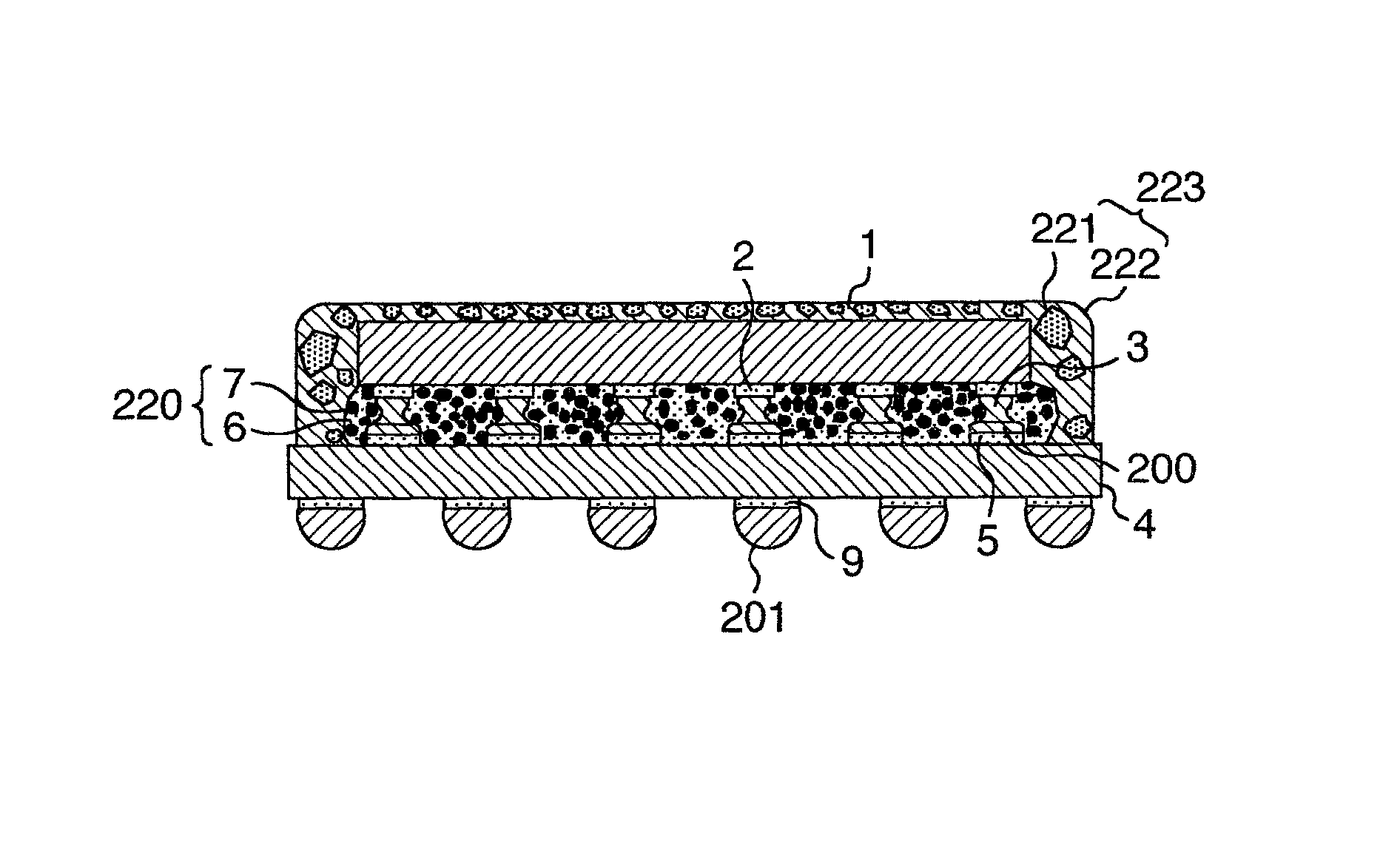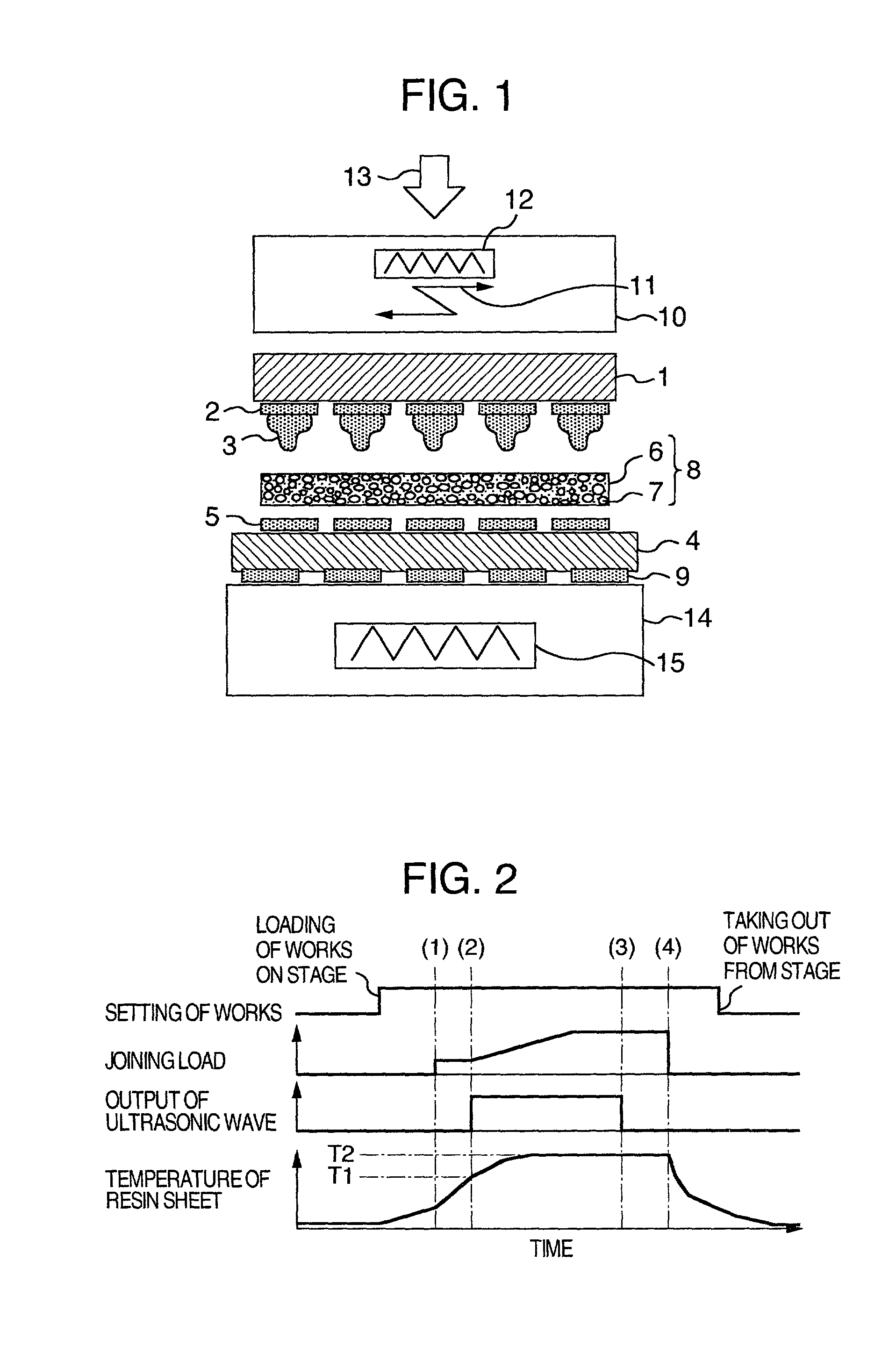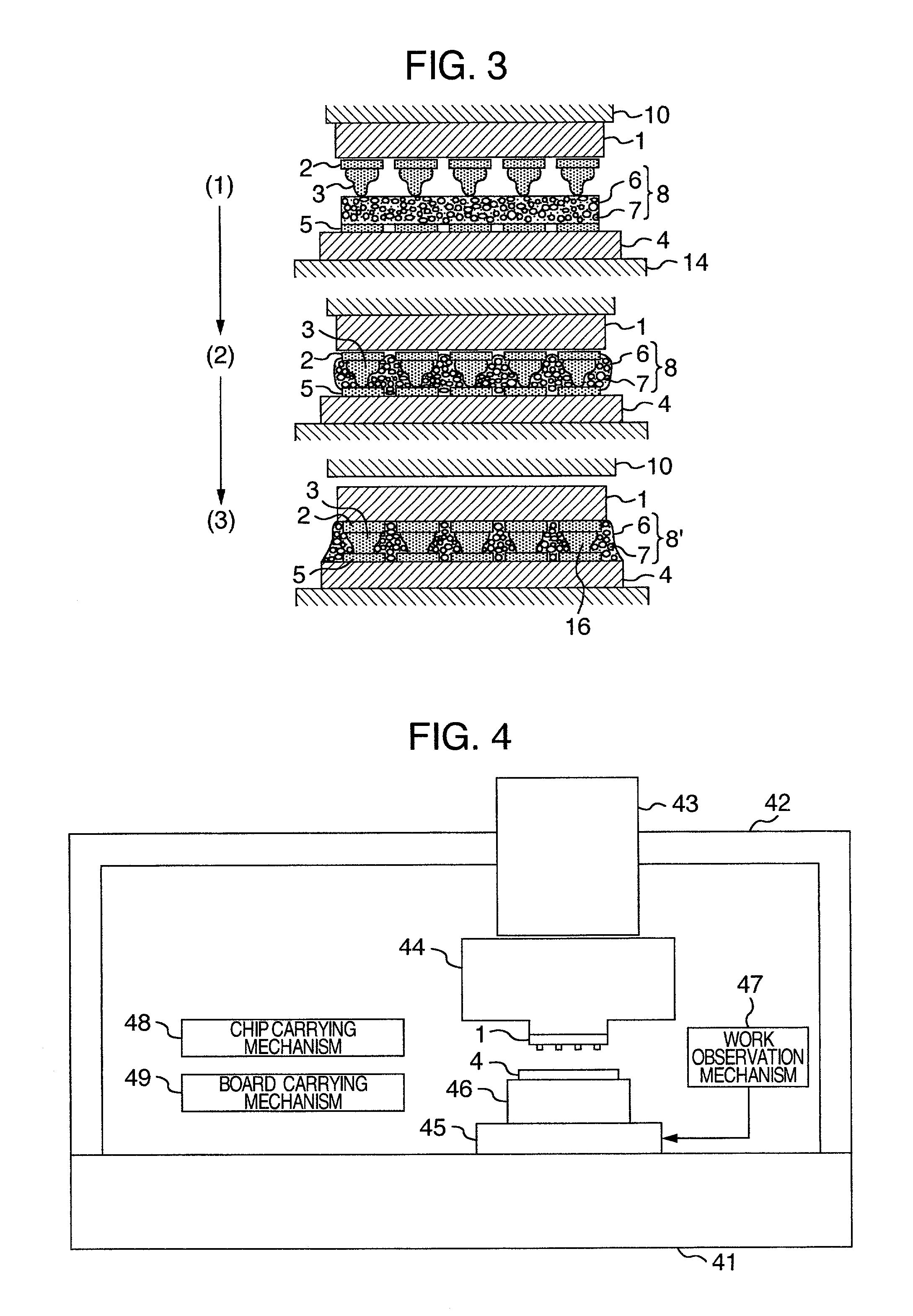Flip chip assembly structure for semiconductor device and method of assembling therefor
- Summary
- Abstract
- Description
- Claims
- Application Information
AI Technical Summary
Benefits of technology
Problems solved by technology
Method used
Image
Examples
first embodiment
[0054] (First Embodiment)
[0055] FIG. 1 shows the construction of joining members and the periphery of the joining members in assembling a flip chip using the ultrasonic wave according to the present invention. In the figure, Au bumps 3 are respectively formed on electrodes 2 of a semiconductor chip 1. The Au bumps are formed by utilizing the ball bonding method. Each of them has two-steps projection type shape in which the height there of is increased as the position thereon is nearer the center of the bump and is formed in such a way that the diameter is 100 .mu.m, the head height is 100 .mu.m, the shoulder height of the first step (on the side of the semiconductor chip 1) is 30 .mu.m and the diameter of the second step (on the side of an organic printed circuit board 4) is 40 .mu.m. On the other hand, after the surfaces of internal connection terminals 5 containing Cu as the basic constituent have been plated with Ni, an Au plated film with 0.7 .mu.m thickness is formed thereon. E...
second embodiment
[0083] (Second Embodiment)
[0084] As another embodiment, instead of sandwiching the resin sheet in the semi-cured state in the first embodiment between the chip and the board, the liquid epoxy resin with about 50 .mu.m thickness containing the insulating inorganic fillers (SiO.sub.2: the mean particle size is 1 .mu.m, and the maximum value is 7 .mu.m) is applied to the chip mounting area of the board, and thereafter immediately, the chip with the Au bumps is mounted on the liquid resin to carry out the ultrasonic wave joining, and subsequently, the curing processing at 150 degrees for 30 minutes is carried out. In the case of the liquid resin, while the pad surfaces of the board are contaminated with the resin, the joining condition is made the condition of the heavy load or the high ultrasonic wave power, whereby it is confirmed that the partial metallic joining can be achieved. In this connection, as for the liquid resin, in addition to the epoxy resin, other thermosetting resin su...
third embodiment
[0088] (Third Embodiment)
[0089] FIG. 9 shows an embodiment of the flip chip assembly method according to the present invention. In the figure, the Au bumps 3 are respectively formed on the electrodes (the Al electrodes) 2 of the chip 1 by utilizing the ball bonding method. At this time, the initial bump diameter is 60 .mu.m, the diameter in the second step is 35 .mu.m, the bump height is 80 .mu.m, and the shoulder height in the first step is 10 .mu.m. Two sheets of resin sheets are employed. Then, a high filler containing epoxy resin sheet (a low thermal expansion resin sheet) 90 in which the containing rate of the fillers 7 made of spheroidal SiO.sub.2 particles is 65% is arranged on the chip side, while a low filler containing epoxy resin sheet (an intermediate thermal expansion resin sheet) 91 in which the containing rate of the same fillers as those of the former is 35% is arranged on the board side in order to carry out the lamination. An Au film with 0.5 .mu.m thickness is for...
PUM
 Login to View More
Login to View More Abstract
Description
Claims
Application Information
 Login to View More
Login to View More - R&D
- Intellectual Property
- Life Sciences
- Materials
- Tech Scout
- Unparalleled Data Quality
- Higher Quality Content
- 60% Fewer Hallucinations
Browse by: Latest US Patents, China's latest patents, Technical Efficacy Thesaurus, Application Domain, Technology Topic, Popular Technical Reports.
© 2025 PatSnap. All rights reserved.Legal|Privacy policy|Modern Slavery Act Transparency Statement|Sitemap|About US| Contact US: help@patsnap.com



